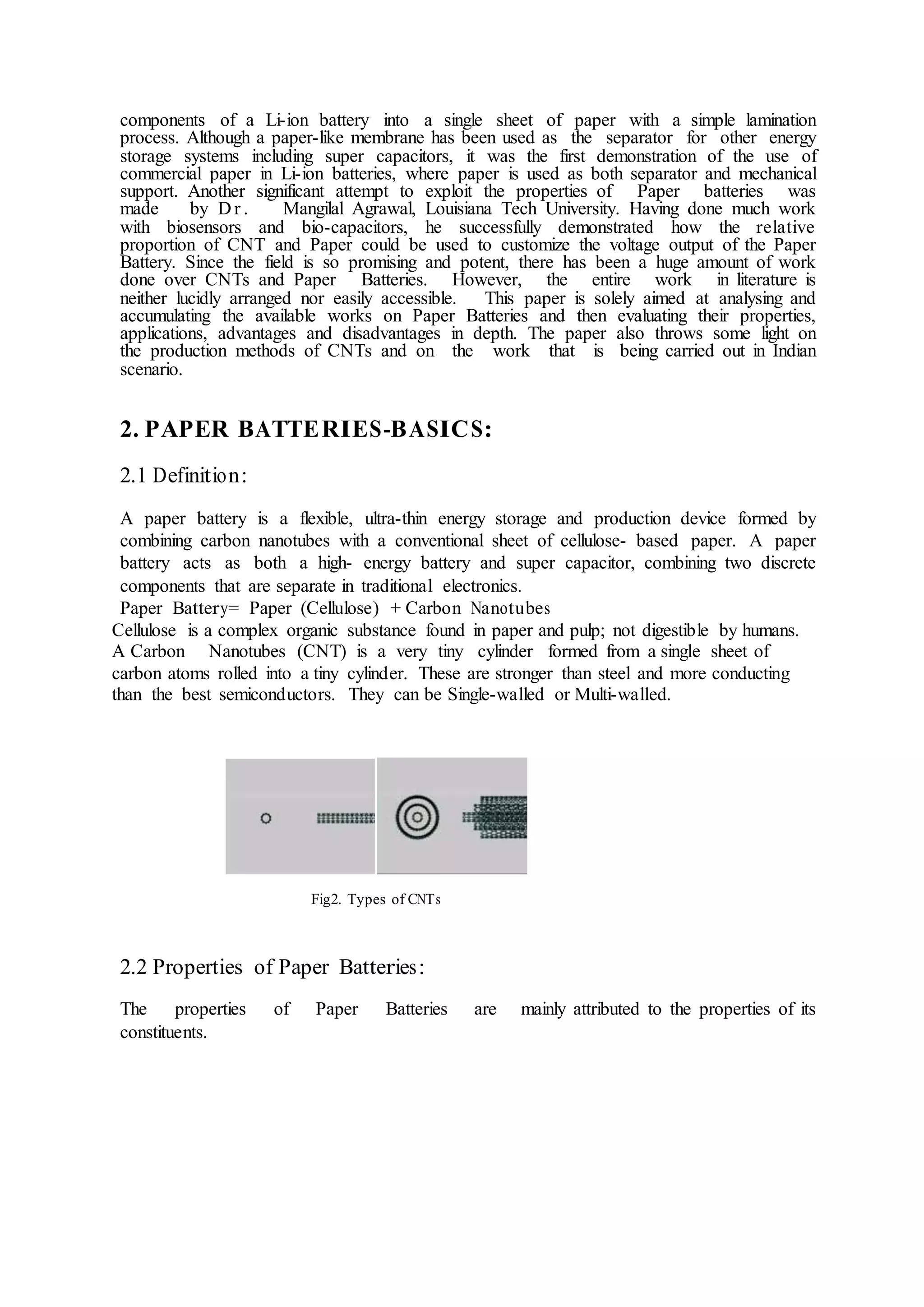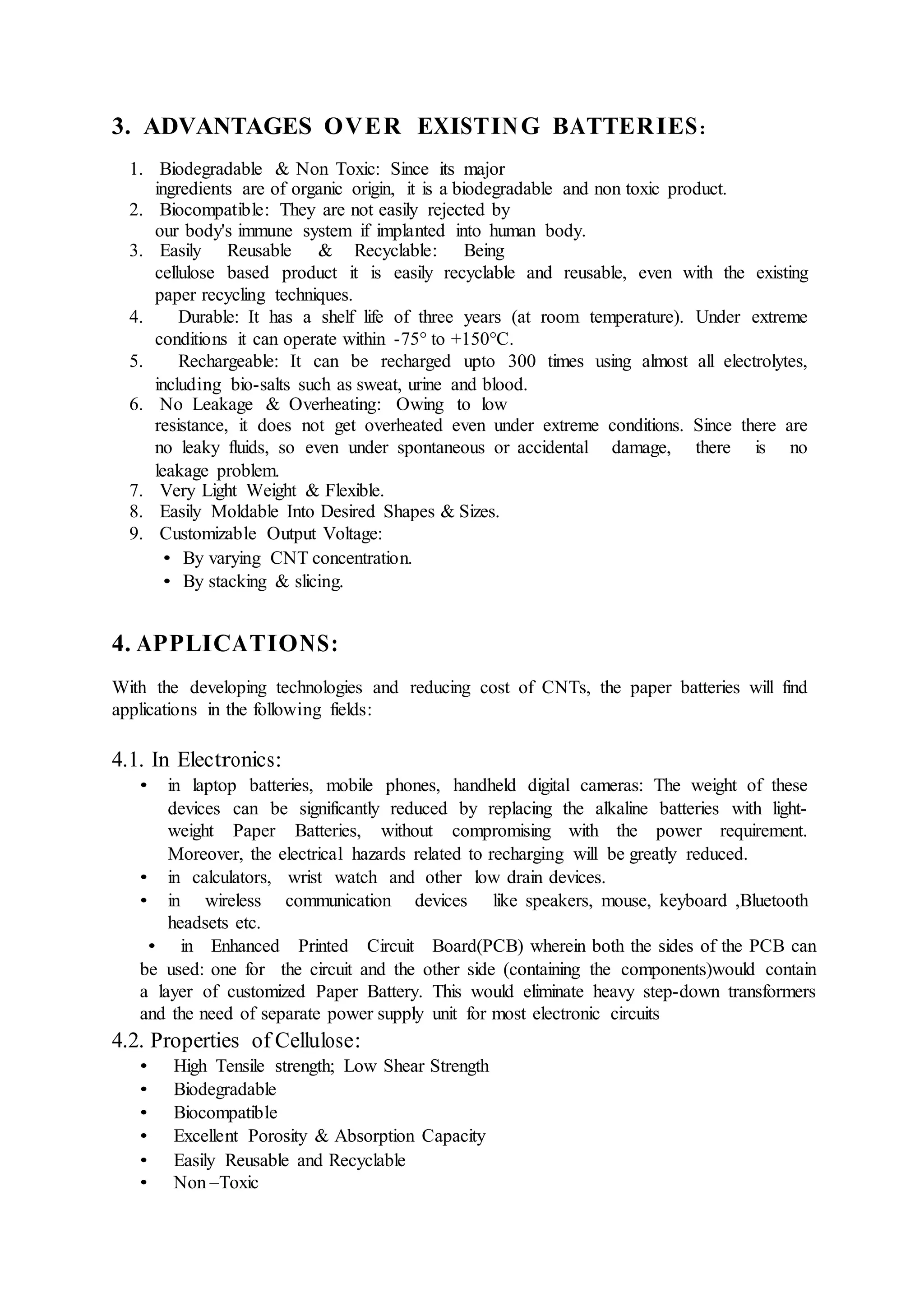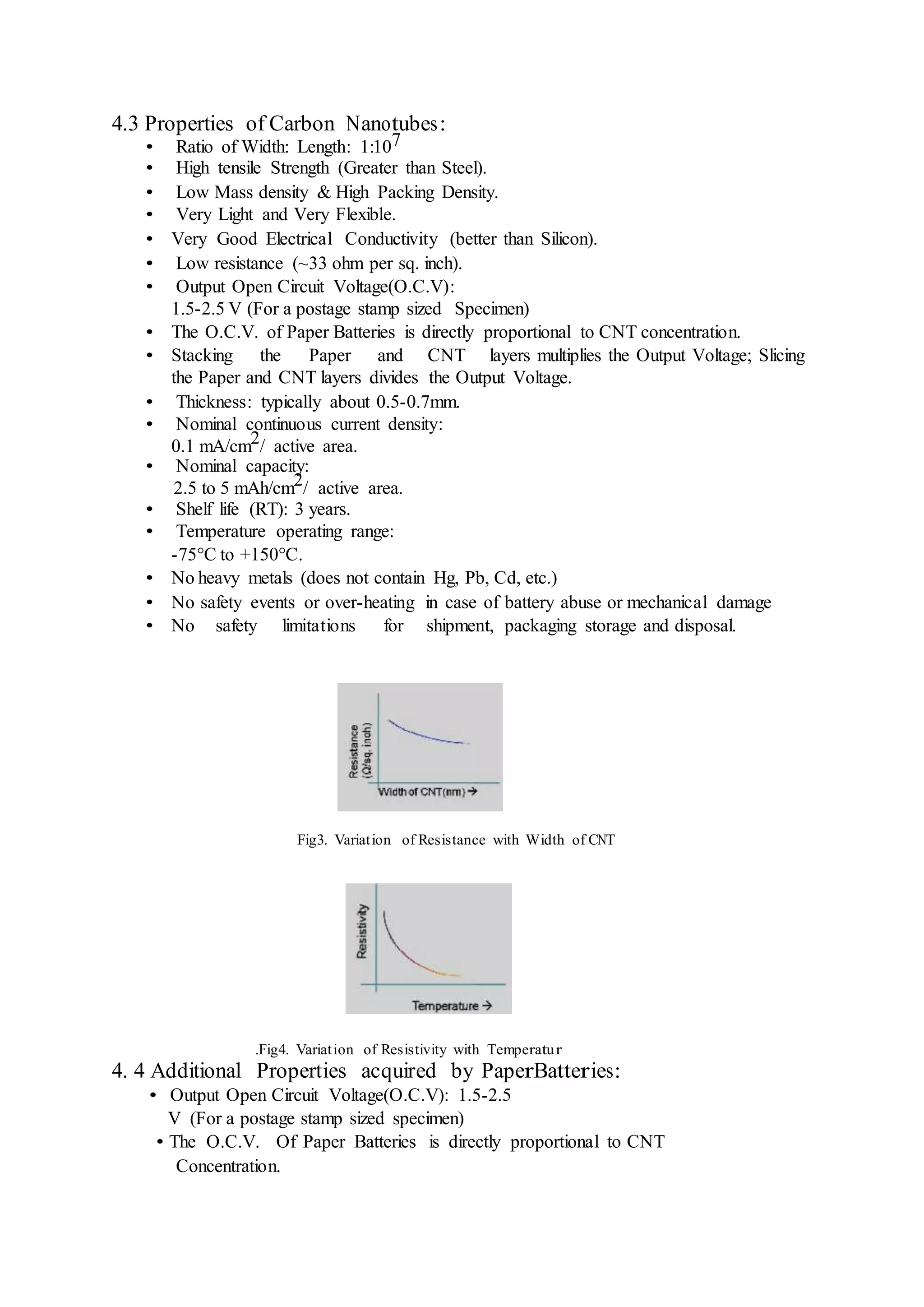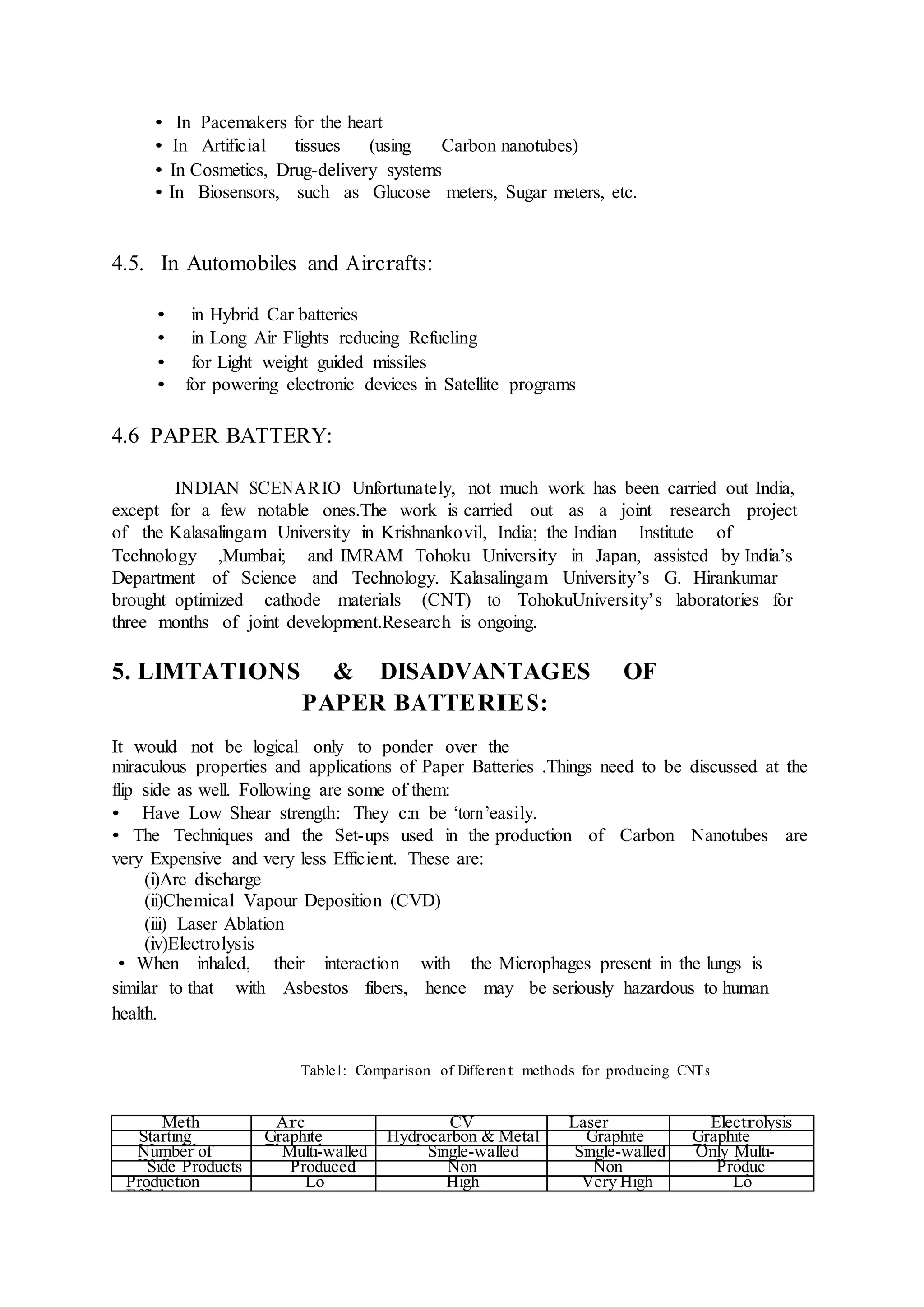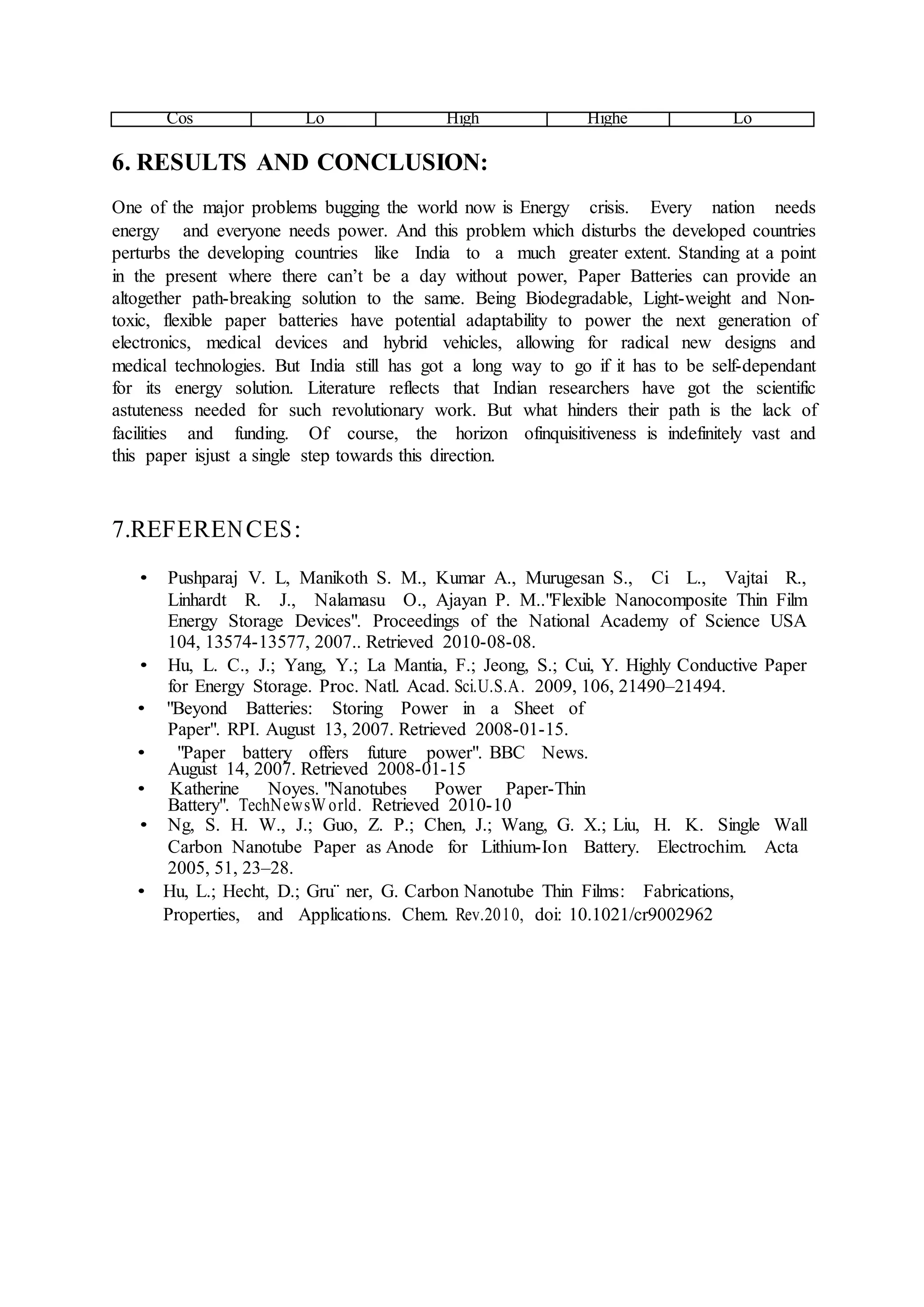Paper batteries are a flexible, ultra-thin energy storage device made by combining carbon nanotubes with paper. They function as both a battery and supercapacitor. Paper batteries have advantages over traditional batteries like being biodegradable, lightweight, non-toxic, durable, rechargeable, and not leaking or overheating. They can power electronics, medical devices, vehicles. However, producing carbon nanotubes is expensive and inefficient, and inhaling them may be hazardous. While paper batteries show promise, more research is needed, especially in India, to develop efficient production methods and funding to realize their potential as an energy solution.
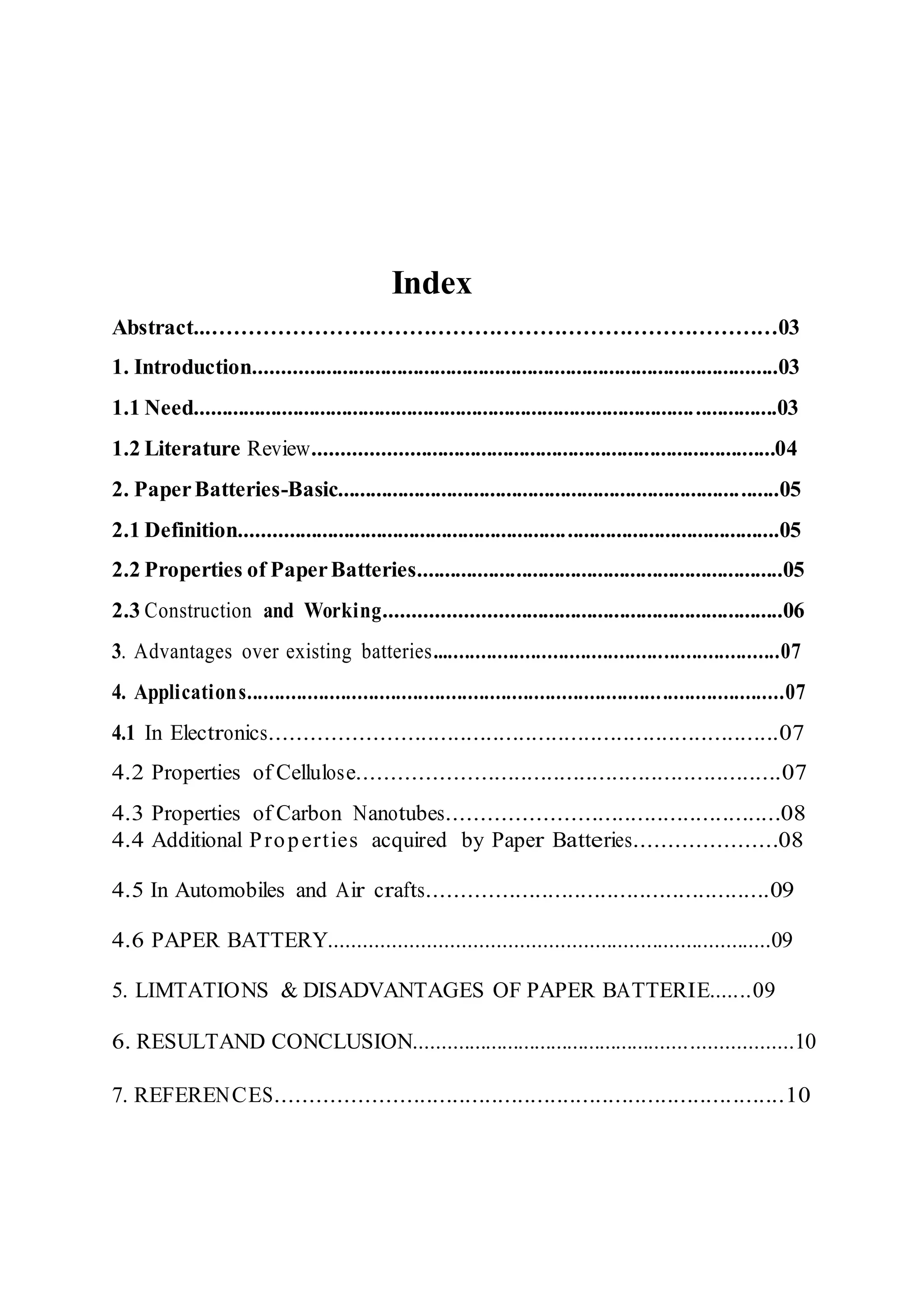
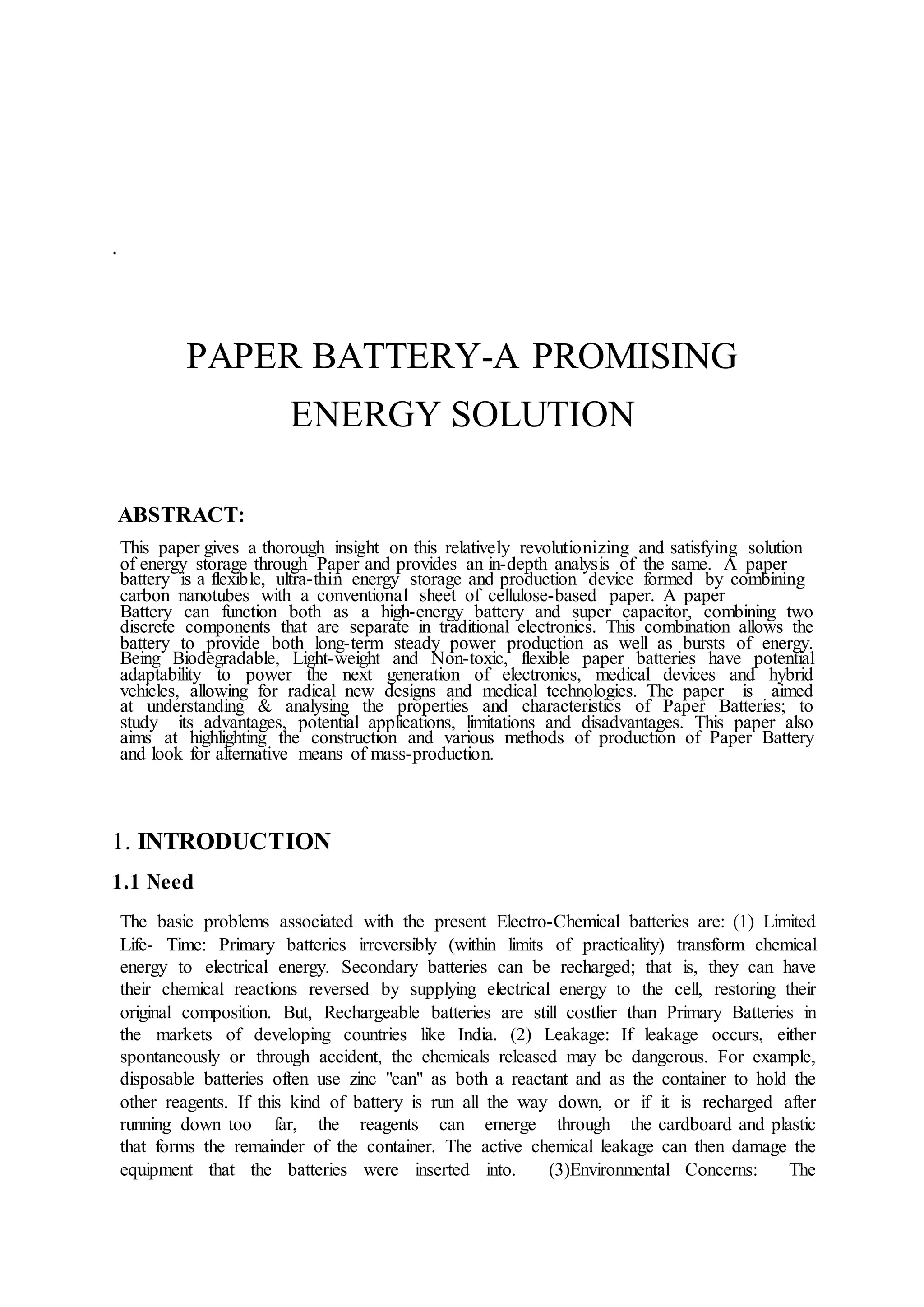
![widespread use of batteries has created many environmental concerns, such as toxic metal
pollution. Metals such as Cadmium, Mercury, Lead, Lithium and Zinc have been identified
as highly toxic metals. Also, batteries may be harmful or fatal if swallowed. Small
button/disk batteries can be swallowed by young children. While in the digestive tract the
battery's electrical discharge can burn the tissues and can be serious enough to lead to death.
Fig1. A Leaking Electrochemical Batter the limitations of Fuel cells are: (1). Cost:
Hydrogen-based fuel cells are still extremely costly for general consumer use. Their use is
still restricted to rocket launch vehicles. Liquid Hydrogen and Hydrogen Peroxide are
essential ingredients that make them costly. (2). Portability & Size: Fuel cells are still not
portable in size, which makes it very difficult for use in electronic and medical gadgets.
The limitations of Solar Cells are: (1) Versatility: Solar cells cannot be used under all
situations, like Emergency Power-Backup, Emergency Energy Purge.(2) Adaptability: Solar
cells cannot be used in all battery-powered equipment. (3). Portability & Size: They are
not at all portable or robust.
(4)Need of an Auxiliary back-up battery: The solar cells need an auxiliary back-up
battery during failures.
1.2. Literature Review:
There has to be a compromise between the charge producing device (Battery) and a charge
storing device (Capacitor). Batteries (whether primary or secondary) cannot possess
indefinite recyclability. Same is the case with capacitors. So, if a balance be sought between
them in such a way so as to utilize the properties of both, the results would be more
rewarding. Owing to this fact and to the miraculous properties of the Carbon nanotubes,
there has been a steady and progressive interest in the global scientific community aimed at
its utilization in the production of Paper Batteries. Significant works have been carried out
independently, notable among which are by Dushbara et al. [2007] and Yi Cui et al. [2010]
in the field of preparing the first prototypes. Previous designs of flexible energy-storage
devices have been based on separated thin-electrode and spacer layers, proving less-than-
optimum in performance and handling because of the existence of multiple interfaces
between the layers. Pushparaj et al. demonstrated the fabrication of ‘electrode-spacer-
electrolyte’ integrated Nano composite units to build a variety of thin flexible energy-
storage devices. The robust integrated thin-film structure allows not only good
electrochemical performance but also the ability to function over large ranges of mechanical
deformation, record temperatures and with a wide variety of electrolytes.
The attempt to integrate the components on to a single unit was revived by Yi Cui et al.
with a much simpler and more promising approach. In this paper, they integrated all of the](https://image.slidesharecdn.com/shareefabegum-170421033201/75/Abstract-PAPER-BATTERY-A-PROMISING-ENERGY-SOLUTION-3-2048.jpg)
